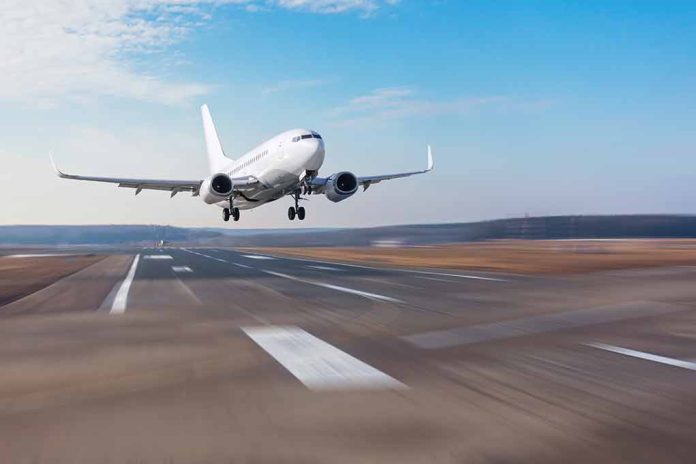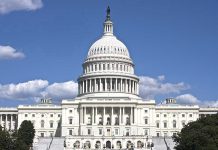
A devastating mid-air collision near Reagan National Airport has claimed the lives of all on board, raising serious questions about the FAA’s recent decision to increase flights at the already congested airport.
Key Takeaways
- An American Airlines regional jet collided with a military helicopter over the Potomac River, resulting in no survivors.
- Senator Tim Kaine had previously warned Congress about the dangers of adding more flights to Reagan National Airport.
- The FAA’s recent reauthorization bill added five slots to Reagan’s daily schedule, increasing air traffic at the busiest runway in the nation.
- Investigations by the FAA, NTSB, and Pentagon are underway to determine the cause of this tragic accident.
- This incident marks the deadliest U.S. air crash in nearly 24 years, prompting calls for reevaluated air traffic safety measures.
Tragic Collision Shakes Washington D.C.
On January 29, a catastrophic event unfolded in the skies near Washington D.C. when an American Airlines regional jet collided with a Sikorsky UH-60 helicopter, plummeting into the Potomac River. The collision involved 60 passengers and four crew members on the plane, along with three soldiers aboard the helicopter. This tragic incident has become the deadliest U.S. air crash in nearly 24 years, with at least 28 bodies recovered from the river and no expected survivors.
The crash site presented a grim scene, with the Bombardier CRJ-701 jet found upside down in three sections in waist-deep water. The helicopter wreckage was also located nearby. Search-and-rescue operations have been hampered by freezing water, wind, and darkness, making the recovery efforts challenging.
🚨BREAKING: DC Fire Chief John Donnelly officially just announced that there are no survivors in the DC plane crash.
President Trump: I have been fully briefed on the terrible accident which just took place at Reagan National Airport. May God Bless their souls. Thank you for the… pic.twitter.com/iQSWRSY3er
— AJ Huber (@Huberton) January 30, 2025
Senator’s Warning Comes to Fruition
In a chilling premonition, Senator Tim Kaine had previously raised concerns about the dangers of increasing flights at Reagan National Airport. His warnings, tragically, have now been realized in this mid-air disaster.
“God forbid waking up and looking in a mirror one day and say, ‘Wow, I was warned. I was warned and I shouldn’t have done this,'” Kaine cautioned.
Kaine’s concerns stemmed from the FAA reauthorization bill, which added five slots to Reagan’s daily schedule. This increase in landings and take-offs at an already congested airport raised red flags for the senator, who pointed out that Reagan National Airport’s main runway is the busiest in the nation, with 90% of flights using the same strip.
Investigations and Responses
In the wake of this tragedy, multiple agencies have launched investigations. The FAA, NTSB, and Pentagon are all working to uncover the cause of this devastating collision. Transportation Secretary Sean Duffy expressed confidence in the safety of U.S. airspace while acknowledging the preventable nature of the accident.
“Do I think this was preventable? Absolutely,” Duffy stated. “We have early indicators of what happened here and I will tell you with complete confidence we have the safest airspace in the world.”
President Donald Trump has also weighed in on the incident, suggesting that the collision could have been prevented and questioning the actions of the helicopter and air traffic control. Audio recordings revealed no response from the helicopter to air traffic control warnings before the crash, adding another layer of complexity to the ongoing investigation.
Impact on the Skating Community
Among the victims were Russian figure skating coaches Evgenia Shishkova and Vadim Naumov, sending shockwaves through the global skating community. Their loss has been deeply felt, with many expressing shock and heartbreak over the tragedy.
As the nation grapples with this devastating event, questions about air traffic safety and the wisdom of expanding flights at already busy airports are sure to dominate policy discussions in the coming months. The incident serves as a stark reminder of the critical importance of stringent safety measures in aviation, especially as air travel continues to increase.









